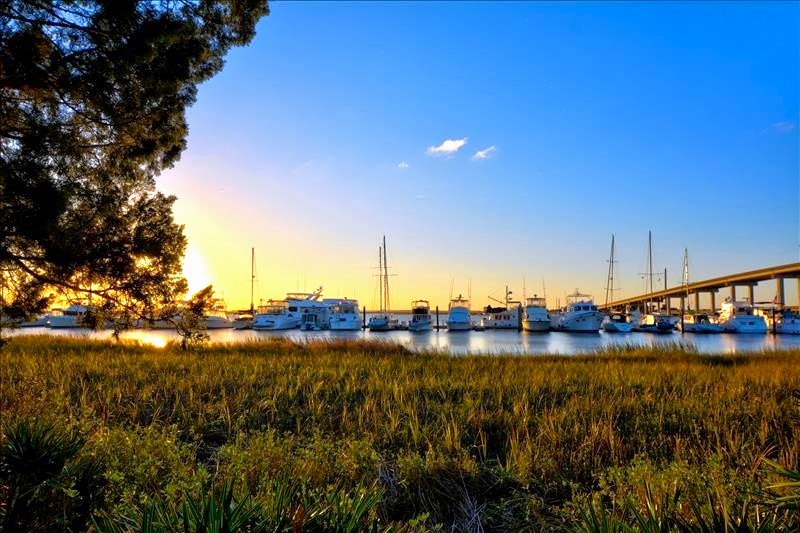Jekyll Island was once considered a club that was reserved for the rich and famous, with visitors such as the Vanderbilts, J.P. Morgan, Marshall Field, and Joseph Pulitzer.
They likely enjoyed the natural beauty of the island and saw it as a slice of paradise, far removed from the hectic lives that they lived. Today, Jekyll Island still maintains its charm and spender with its lovely cottages and colonial-style buildings. Learn more about the history of Jekyll Island by visiting the following Jekyll Island museums.
Faith Chapel
Faith Chapel was built in 1904 and maintains its Gothic Revival architecture by the furnishings, which complement it. The chapel’s medieval craftsmanship can be seen in the form of its trefoil cutouts.
Infirmary
This historic, Queen Anne house was built in 1890 for one of the Jekyll Island Clubs’ founding members. It was later moved to its current location in 1930 when it was then used as an infirmary. The house is currently available for lease.
Skeet House
The Skeet House was constructed in the 1930s and was a recreational facility for members of the Jekyll Island Club. Skeet shooting was popular during this time, which is why the facility was a welcomed addition to the island’s other recreational facilities. After falling into despair, efforts were made to preserve Skeet House. It was eventually restored and moved to the historic district of the island.
Goodyear Cottage
This Mediterranean Revival cottage was built in 1906 by the same New York architects that built the New York Public Library. The house was restored in 1974 and currently houses the Jekyll Island Arts Association and the Jekyll Island Pottery Guild. Local and visiting artists’ works are on display at the Goodyear Cottage.

Indian Mound Cottage
This cottage changed ownership several times, eventually becoming the home of William Rockefeller, who made significant changes to the home between 1912 and 1917. Changes included extending the living room, painting the woodwork on the house to white, and changing the porch columns to a classical Doric design.
Hollybourne Cottage
Charles Stewart Maurice, who constructed many of the country’s roads and railways, built this cottage in 1890. This cottage served as his vacation retreat and was seen as somewhat as a marvel, as its style was different from many of the other homes and cottages on Jekyll Island. It was considered a Jacobethan style cottage.
Moss Cottage
The Moss Cottage was built in 1896. It has the same rustic charm and laid back appeal that many of the other cottages encompass. Its architecture denotes a sense of a casual and uncomplicated lifestyle. The house had a basement and a solarium on the south side.
Plan Your Visit
Learning about Jekyll Island’s history is easy to do if you’re willing to travel beyond the Jekyll Island Museum. You’ll discover a rich island history in the Jekyll Island Historic District!
Mistletoe Cottage
Architect Charles Gifford designed the Mistletoe Cottage. His firm was known for designing Colonial Revival and Shingle-style homes throughout the U.S. Charles Gifford was also known for being the designer of the New Jersey State buildings in 1893. He was later commissioned to design five buildings on Jekyll Island by the island club members.
Villa Ospo
Designed in 1972, the Villa Ospo was owned by Walter Jennings, who later become the President of the Jekyll Island Club. Jennings, along with John Russell Pope, constructed Villa Ospo. Pope was known as one of the world’s best classical architects, as his works include the Jefferson Memorial and Constitution Hall in Washington, D.C.

Villa Marianna
Architect Mogens Tvede built Villa Marianna in 1928. He used a mix of Spanish Eclectic and Italian Renaissance styles in the design of the house. The beautiful house is available for weddings and other local events.
Horton House
Horton House was built in 1743 after a Spanish attack destroyed William Horton’s first house on the island. His property would eventually be used to grow crops for a nearby settlement known as Frederica Settlement. The first beer ever brewed in Georgia was brewed on his Jekyll Island Plantation. The Horton House is on the National Register of Historic Places and is among the oldest tabby buildings in the state.






